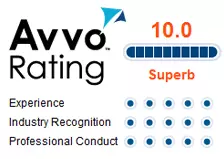According to Judge Mark Goldsmith, Oakland County’s new Virtual Work Release (hereafter “VWR”) is not available for felony drunk drivers. Judge Goldsmith recently made this ruling from the bench after reviewing the defendant’s brief and the arguments of the defense attorney Patrick T. Barone and assistant prosecuting attorney Craig Pavlock.
The problem arose based on Oakland County’s decision to terminate the “Traditional Work Release” (hereafter “TWR”) program in favor of the new VWR. Judge Goldsmith found that VWR did not satisfy the Michigan drunk driving law which states that a person convicted of felony drunk driving in Michigan shall be sentenced to:
(ii) Probation with imprisonment in the county jail for not less than 30 days or more than 1 year and community service for not less than 60 days or more than 180 days. Not less than 48 hours of the imprisonment imposed under this subparagraph shall be served consecutively[i].
However, it may be argued that because there are more similarities than differences, VWR is substantially similar to TWR and therefore satisfies the requirements of Michigan law. The similarities in the programs begin with the screening process. With both programs a judge must first authorize participation in work release. After authorization both programs require the jail’s classification unit to screen the defendant to assure that they meet the eligibility requirements, including that:
- No inmate may be placed into the VWR program with the instant offense being a conviction for any CSC charge or attempt; sexual child abuse activity; failure to register as sex offender; stalking (felony); escape or attempt escape (from a secured facility); and/or VOP with one of the preceding offenses as the underlying charge;
- No VWR inmate may have outstanding warrants/holds/unpaid bonds;
- Inmates will be removed from VWR for drug/alcohol abuse;
- VWR inmates that escape or attempt escape or walk-away are remanded to incarceration in the general population and are not thereafter reinstated to VWR during their current incarceration.
- VWR inmates that commit rule violations shall likewise be remanded to incarceration in the general population and not thereafter reinstated to VWR during their current incarceration.
- VWR inmates are required to provide written documentation verifying their employment or school.
- While on VWR inmates will be subjected to random drug testing which will be conducted through the Sheriff’s Office Results Program. Such testing is not court ordered but rather is a requirement of the Oakland County program.
With the imposition of the VWR program none of the above conditions, requirements or sanctions will be changed, and the process of being approved and placed into the VWR is identical to the TWR program.
Additionally, while on VWR an inmate’s whereabouts will be more stringently monitored than with TWR and this is one of the great advantages of the new program. After being screened for eligibility the Oakland County Jail will identify tether “exclusion and mapping zones” based on the inmate’s residence and place of work or school.
Thereafter, the VWR program offers probation officers and judges unprecedented access (through their internet browsers) to ensure that inmates are complying with the parameters of the program. This includes the ability to virtually “see” inside the inmate’s home and place of work to be sure that the inmate is in fact where they purport to be.
As suggested above, after being placed into the VWR program, all violations will result in program termination. Violations will be communicated to the Sheriff’s Fugitive Apprehension Team (via bench warrant) for inmate pick-up and return to jail to complete remainder of the jail sentence.
These factors constitute significant differences from any “tether while on bond” scenario where a defendant is not nearly as consistently monitored, and where he or she may or may not be immediately incarcerated after an alleged violation.
Additionally, unlike the typical “tether while on bond” scenario, for any violation of VWR, the Sheriff has determined and directed that the Oakland County Jail give credit against the balance of the underlying sentence.
The issue of whether or not VWR, with all of its similarities to TWR, qualifies as incarceration under the Michigan drunk driving statute[ii] is one of first impression in this state.
However, other States have recognized home confinement as satisfying statutory definitions of “jail.” For example, in the New Mexico Court of Appeals[iii] ruled that the condition that defendant remain at his home at all times except to attend alcohol counseling, work, or religious services was a sufficient limitation on defendant’s freedom of movement to entitle him to pre-sentence credit.
Defendant’s compliance with the conditions of release was monitored by correctional officers through the electronic monitoring program. Given this level of monitoring, the conditions of defendant’s house arrest were in many ways similar to the conditions of constructive custody under an inmate release program.[iv] This case is directly on point. Oakland County’s VWR program is, like the New Mexico program, “constructive custody.”
Similarly, the Washington Court of Appeals[v] ruled that while home confinement was partial confinement, the confinement was significant enough to satisfy its credit statute. The same is true of the Michigan VWR program where the “confinement” is significant due to 24/7 monitoring, exclusionary and mapping zones, drug testing and risk of immediate pick-up and re-incarceration.
In 1992 the Michigan Appeals Court suggested that tether does not meet the requirements of incarceration. However, the cases that came to this conclusion did not address the issues in this case, that is, they did address the issue of tether while on bond.[vi]
The issue here differs significantly from that ruled on in these 1992 cases. Here, a the question arises as to whether or not the proposed Oakland County VWR program satisfies the statutory mandated 30 days of imprisonment in county jail, whereas, in the 1992 cases the court’s ruling was limited to the issue of jail credit.
In contrast, the Michigan drunk driving statute[vii], and the corresponding statutory sections addressing sentencing[viii] under the Michigan drunk driving statute scheme is silent as to what is required to satisfy the 30 day mandatory minimum.
However, the proposed Oakland County VWR program will in many ways be more restrictive than any tether program that have been utilized in this State in the past. Additionally, the Oakland County Sheriff has reported that their program will give automatic jail credit to any individual who is found to have violated the terms of the VWR program.
Because VWR is so similar to TWR, and because the Oakland County program will be more restrictive than any prior tether program, it should satisfy the mandatory sentence contemplated in the Michigan drunk driving statute.[ix]
[i] MCLA § 257.625(9)(c)(ii).
[ii] Id.
[iii] State v Guillen, 130 NM 803; 32 P3d 812 (2001).
[iv] Id.
[v] State v Anderson, 132 Wn2nd 203; 937 P2d 581 (1997).
[vi] See People v Reynolds, 195 Mich App 182; 489 NW2d 128 (1992) (holding that home confinement was a restriction, not a confinement, and was not “jail” as that term is commonly used and understood) and People v Smith, 195 Mich App 147; 489 NW2d 135 (1992) (holding that time spent confined to the defendant’s home by GPS tether while on bond did not entitle the defendant to prison credit).
[vii] MCLA § 257.625.
[viii] MCLA § 257.625(9)(c)(ii).
[ix] MCLA § 257.625.











{ 4 comments… read them below or add one }
How accurate is your info on the VWR program? I’m currently in the TWR program, and we are constantly getting more inmates sentenced to TWR.
I have been in regular contact with Undersheriff Mike McCabe and it is from him that I’ve received this information. He has reviewed my articles for accuracy. The information posted here is therefore 100% accurate.
if you are in TWR now ! with more then the 30 day jail time( thay the courts) want on felony drunk driving ,will twr be put on the vwr program?
thay are in twr now ,out date is june 15th- what can thay expet or can thay expet to get a gps tether,thay went in front of a judge back in early dec,2009 and the judge said no! to the tether ,said if the sheriff's office changes his work release then it would be up to that office? thank's for all the info
nice post. thanks.
{ 1 trackback }